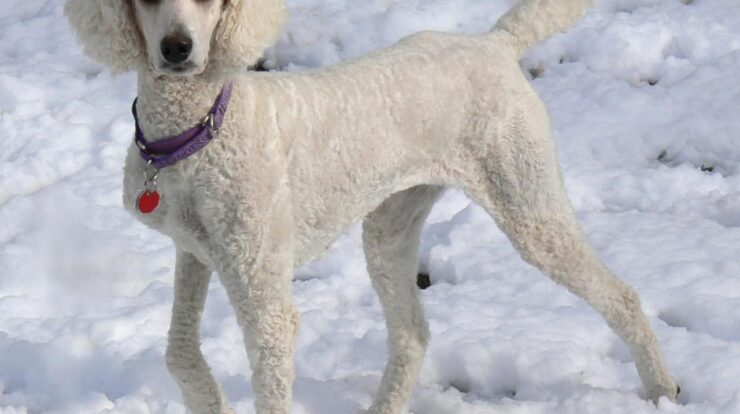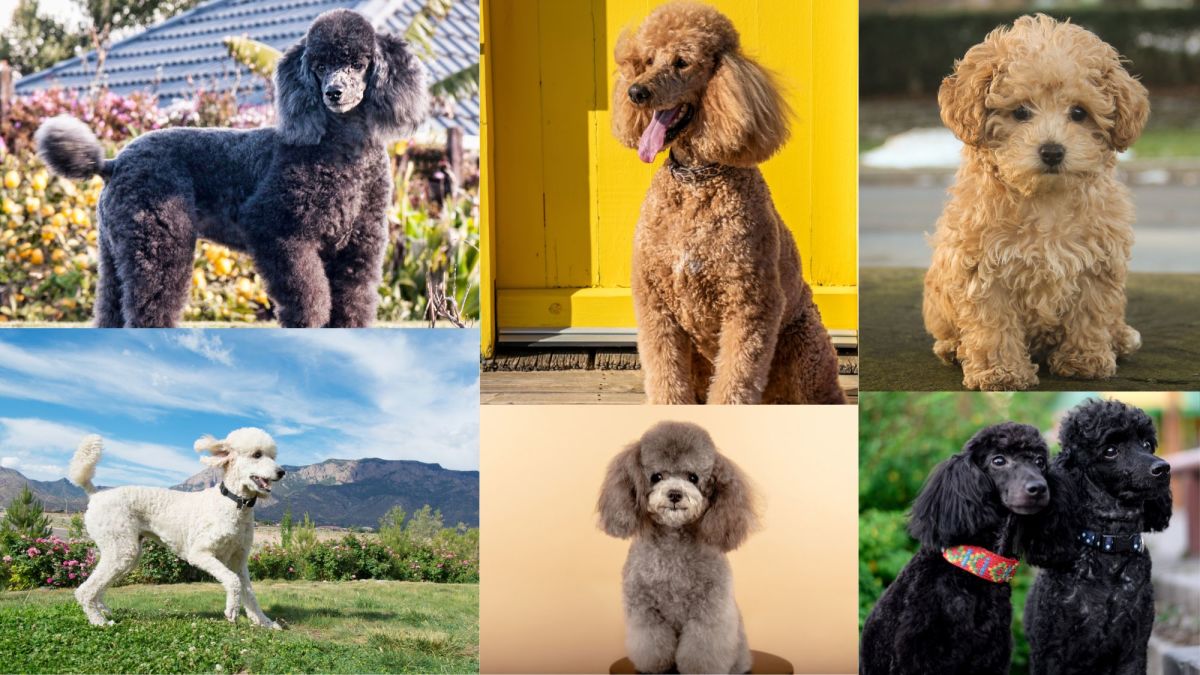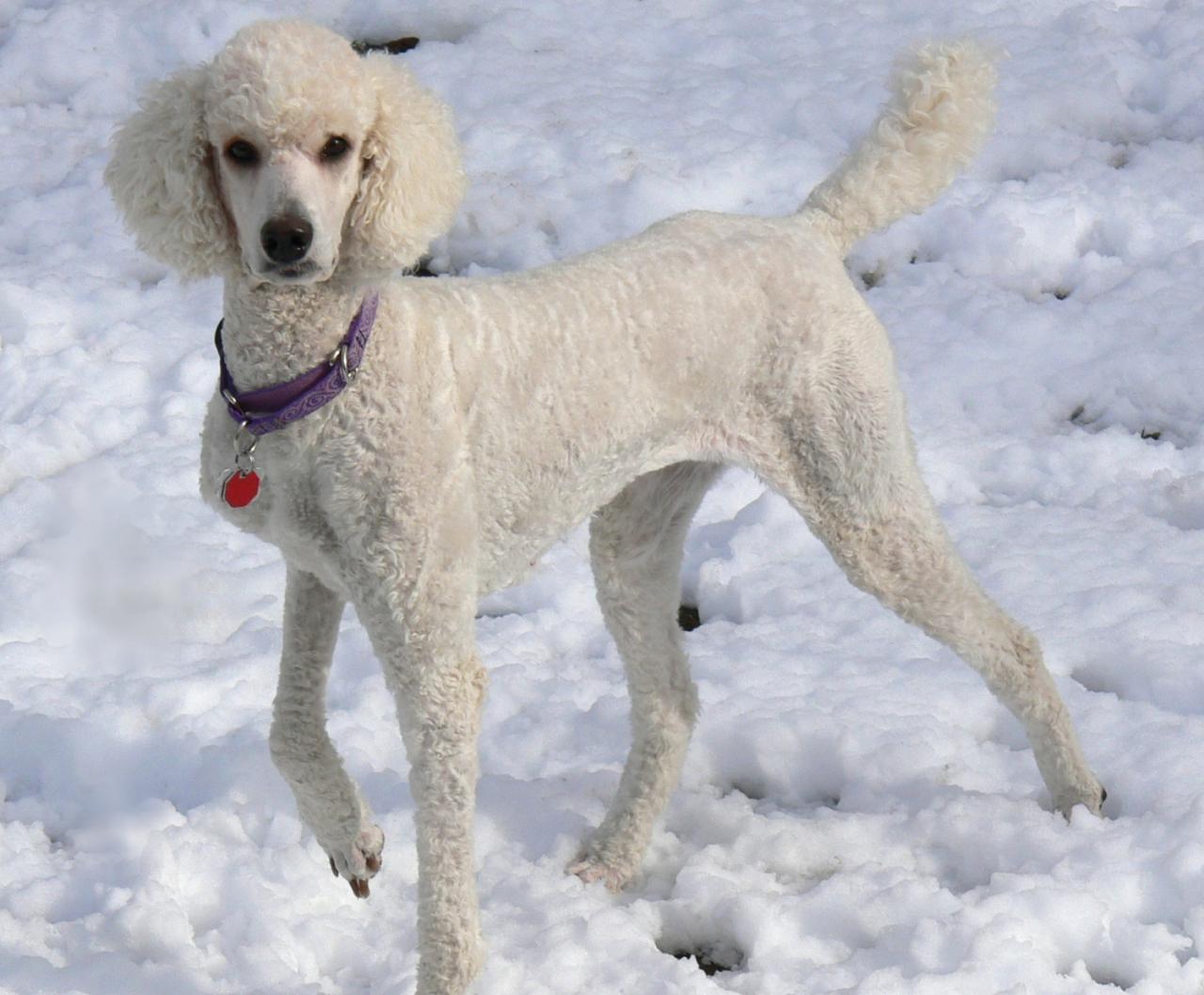
Poodle definition – The poodle, renowned for its distinctive appearance and remarkable intelligence, holds a captivating place in the world of canine companions. This multifaceted breed boasts a rich history, unique physical characteristics, and a captivating personality that has endeared it to dog lovers across the globe.
From its origins as a water retriever to its current status as a beloved family pet, the poodle has evolved into a breed that embodies elegance, versatility, and unwavering loyalty. Join us as we delve into the poodle definition, exploring its history, traits, care requirements, and the enduring popularity that has made it a cherished member of countless households.
Definition
The term “poodle” is derived from the German word “pudel,” meaning “to splash in water.” Poodles are a breed of dog known for their distinctive curly coat, which comes in various colors. They are highly intelligent, active, and loyal companions.
Physically, poodles have a well-proportioned, athletic build with a slightly arched neck and a long, elegant muzzle. Their eyes are typically dark and almond-shaped, and their ears are long and drooping. The most notable characteristic of poodles is their curly, hypoallergenic coat, which requires regular grooming to maintain its appearance and prevent matting.
Poodles come in three recognized sizes: standard, miniature, and toy. Standard poodles are the largest, standing over 15 inches tall at the shoulder, while miniature poodles are between 10 and 15 inches tall, and toy poodles are the smallest, standing at just 10 inches or less.
History and Origin
The exact origins of the poodle breed are uncertain, but it is believed to have developed in Germany or France in the 16th century. One theory suggests that poodles originated from water dogs used by German hunters to retrieve waterfowl.
Another theory traces their lineage to French Barbet dogs, which were used for hunting and companionship.
Poodles gained popularity in France during the 17th century, where they became known as “caniche” (meaning “duck dog”). They were prized by the French aristocracy for their intelligence, trainability, and elegant appearance.
Temperament and Personality
Poodles are renowned for their exceptional intelligence, eagerness to please, and affectionate nature. They are highly trainable and excel in various activities such as obedience, agility, and water sports.
Poodles are typically loyal and devoted companions, forming strong bonds with their owners. They are playful and energetic, requiring regular exercise and mental stimulation to stay happy and healthy.
While the temperament of poodles is generally consistent across the three sizes, there may be slight variations. Standard poodles are known for their dignity and confidence, while miniature poodles are often described as more lively and playful. Toy poodles, on the other hand, tend to be more affectionate and lap-loving.
Care and Grooming

Poodles require regular grooming to maintain their distinctive coat. Daily brushing is essential to prevent mats and tangles. Professional grooming every 4-6 weeks is recommended to keep their coat in optimal condition.
Poodles have a moderate activity level and require daily exercise. They enjoy walks, playtime, and swimming. They are also intelligent dogs who benefit from training and mental stimulation.
Like all breeds, poodles are prone to certain health issues. Some common concerns include hip dysplasia, elbow dysplasia, and patellar luxation. Regular veterinary checkups and preventive care can help detect and manage these conditions.
Health and Lifespan
Poodles are generally healthy dogs with an average lifespan of 10-15 years. Standard poodles tend to have a slightly longer lifespan than miniature and toy poodles.
As with any breed, certain health issues can affect poodles. Some common concerns include:
- Hip dysplasia
- Elbow dysplasia
- Patellar luxation
- Cushing’s syndrome
- Addison’s disease
Regular veterinary checkups and preventive care can help detect and manage these conditions, ensuring a long and healthy life for poodles.
Popularity and Recognition
Poodles are one of the most popular dog breeds worldwide. They are recognized by major kennel clubs, including the American Kennel Club (AKC), the United Kennel Club (UKC), and the Fédération Cynologique Internationale (FCI).
Poodles have been featured in popular culture for centuries, appearing in movies, TV shows, and literature. They are often associated with elegance, intelligence, and loyalty.
In the United States, poodles consistently rank among the top 10 most popular breeds according to the AKC. Their popularity stems from their intelligence, adaptability, and affectionate nature.
Closing Summary: Poodle Definition

In conclusion, the poodle definition encompasses a breed that has captured the hearts of dog enthusiasts worldwide. Its distinctive appearance, intelligence, and unwavering loyalty have solidified its place as a beloved companion, while its rich history and adaptability have ensured its enduring popularity.
Whether you are considering welcoming a poodle into your family or simply admiring its unique qualities, this comprehensive guide has provided a deeper understanding of this remarkable breed.
FAQ Section
What is the origin of the poodle breed?
The poodle is believed to have originated in Germany as a water retriever, with its ancestors tracing back to the Barbet and other water-loving breeds.
What are the distinguishing physical characteristics of poodles?
Poodles are known for their curly, hypoallergenic coat, which comes in a variety of colors. They have a lean, athletic build with webbed feet and a distinctive topknot.
How many types of poodles are there?
There are three main types of poodles: Standard, Miniature, and Toy. Standard poodles are the largest, while Toy poodles are the smallest.
Are poodles intelligent dogs?
Yes, poodles are highly intelligent and eager to please. They are known for their trainability and excel in obedience and agility competitions.
What are the grooming requirements for poodles?
Poodles require regular grooming to maintain their distinctive coat. This includes daily brushing, regular bathing, and professional grooming every 4-6 weeks.





